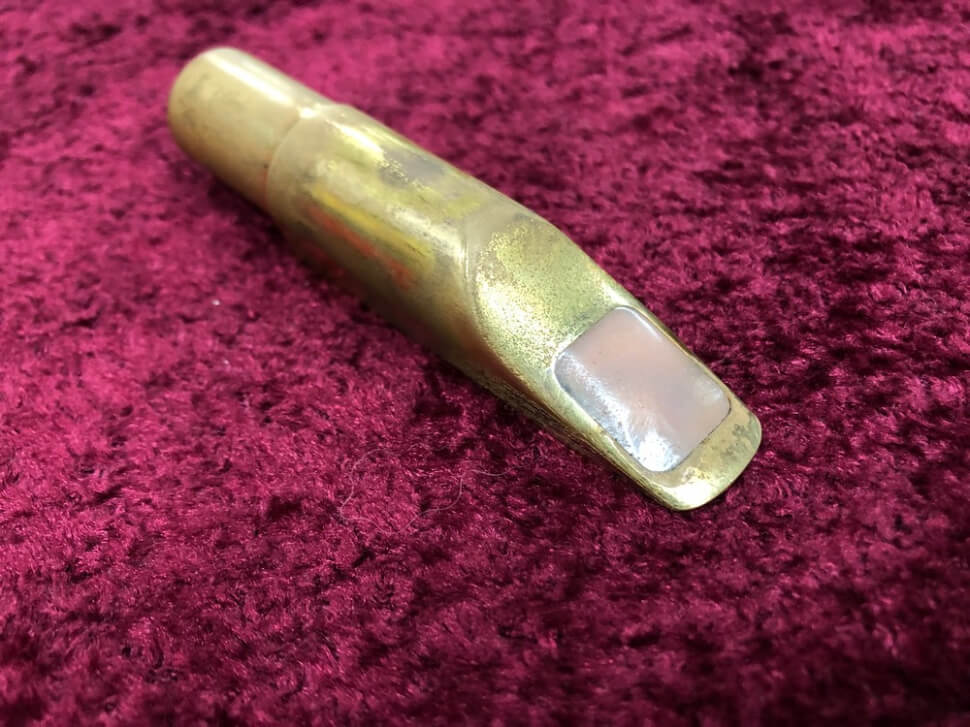The thing is, saxophones in general are expensive, including their various sizes (mainly soprano, alto, tenor, and baritone), which is justified as they’re quite intricate instruments with many parts. Not only that, but a lot of the work that goes into their manufacturing is manual labor, which explains their prices.
But what about mouthpieces? These, too, include hand finishing of varying degrees, which affects the final price of the item.
Table of Contents
So, Why Are Alto MPCs Expensive?
The two factors that come into play with mouthpieces are the amount of manual labor (hand finishing) that goes into it and the material of the MPC. Of course, plastic and hard rubber are cheaper, then there are cheap metal options, and high-quality, expensive metal.
To be fair, it’s not likely that you’ll find a hand-finished mouthpiece under the $100 mark, but mass-produced ones (like Selmer and Vandoren MPCs) also don’t get to the $500 mark you find on the more crafted options.
The same rule applies to new options, vintage, or used ones, in proportion to the original price differences. Although vintage and used options are more of a hunt as they’re subject to the market pricing based on supply and demand.
For example, Dave Guardala made a few mouthpieces that were around $250 back in the 90s. Now you can find those mouthpieces for $1800 and even $2000 -about 7 or 8 times the original price-, which is a whopping increase in value, even when taking inflation into consideration. And despite any controversy around the name, these mouthpieces have an element that’s so appealing, which adds to their value. This element cannot be recreated easily with duplicate options.
Still, some boutique options are unfairly priced with the commercial purpose of targeting certain markets, so they add a mark-up that doesn’t really reflect the actual manufacturing costs of producing a mouthpiece, even if it’s hand-crafted to a high degree.
Not to mention the political/industrial part where instruments are cheaper if their production -especially manual labor- is outsourced to the eastern countries. This is why Taiwanese and Indonesian saxophones that are available at a lower price are getting more popular lately.
Users Also Read: Why Are Saxophones So Expensive?
Are Expensive Mouthpieces Better?
To be fair, there’s a certain level of expertise that you have to get to in order to really make the best out of your mouthpiece. It’s comparable to playing a 4K movie on your grandma’s TV screen from the 40s… you just won’t be able to reach the full potential of the item.
So, unless you’re a dedicated professional, you can definitely get by with a mid-range mouthpiece. This is especially true if you’re an amateur or a student who took the saxophone up for a hobby and not a professional career to actually make some money playing.
Why Do Vintage Mouthpieces Have an Appeal?

In terms of practicality, you don’t really need an overpriced vintage mouthpiece to play the saxophone and hit the notes you want, but there’s always a distinctive sound to vintage options, whether it’s a sax or mouthpiece.
Names like David Guardala, Bergs, and Links were played by some of the best and most original saxophonists, each of whom had his very own playing technique and unique sound. And while you can get the sound you want out of a mass-produced, the sound won’t be as unique and distinctive as what comes out of a vintage option.
Is There a Way Around Expensive MPCs?
Of course, no matter what you’re buying, you can probably find a used item that’s anything between 30 and 50% lower in price. A lot of people would prefer using only one quality mouthpiece and not owning a bunch of unnecessary ones, so, whenever they upgrade, they put their old ones for sale, and that’s where you can get a good quality mouthpiece for a very good price.
Moreover, there’s always the option of buying a new mouthpiece that offers good value for the price like the high-quality, mass-produced Vandoren, Selmer, Yanagisawa, and Yamaha options.
From these options, you can get the Vandoren SM511B T45 (tenor) for less than $150, the Selmer S-80 C* (alto) for less than $170, the Yamaha 4C (alto), or the Yanagisawa Y27047 (alto).
These ones are amazing options from the best brands on the market for mass-produced musical instruments and accessories. You can also get a Meyer option at around $130 if you opt for the rubber Meyer MR-402-5MM (alto).
Final Words
Now that you know the details of producing a mouthpiece, their prices could be justified. Still, that doesn’t mean that you should opt for an option that’s beyond your budget constraints, you can still get a used vintage or high-end option for a much lower price.
On the other hand, you can enjoy a mid-range option for a reasonable price from some of the reliable options on the market like Yamaha and Selmer. And after all is said and done, some players have gotten way more out of an $80 mouthpiece than others have gotten out of a $500+ option, as a big part of playing the sax depends on the entire setup and not just a certain aspect as well as the player’s own playing technique.


